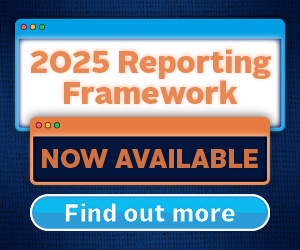The minimum requirements for investor membership play an important role in supporting the PRI’s mission to achieve a sustainable global financial system. Signatory accountability contributes to the achievement of our mission by establishing a baseline for responsible investment on which signatories can build.
The minimum requirements
Investor signatories must meet three minimum requirements. These are listed in the Policy, Governance & Strategy (PGS) module of the Reporting Framework:
| Minimum requirement | Policy, Governance & Strategy (PGS) module indicator | Investment & Stewardship Policy (ISP) module indicator |
|---|---|---|
| Reporting year | 2025 2024 2023 | 2021 |
|
A formalised policy that:
|
PGS 1 PGS 8 |
ISP 1 ISP 1.1 ISP 3 |
| Senior level oversight of the stated policy and accountability mechanisms for implementing responsible investment. | PGS 11 | ISP 6 |
| Staff (internal or external) explicitly responsible for implementing the responsible investment or ESG policy. | PGS 12 | ISP 7 |
The minimum requirements enable the PRI to:
- engage with and support signatories to improve their responsible investment practice and demonstrate their commitment to the Principles;
- delist signatories that are not committed to the Principles, as a last resort.
Signatory accountability rules
The Signatory accountability rules:
- support the integrity of the PRI membership;
- inform signatories about the minimum requirement criteria;
- inform signatories about the formal process for engagement and delisting.
The rules were approved by the PRI Board in December 2017.
Asset owner and investment manager signatories that fail to meet the minimum requirements will enter an engagement period during which the PRI will support them to develop their responsible investment practice. Signatories who do not meet the minimum requirements over a two-reporting cycle period, despite PRI engagement, will be submitted to the PRI Board for delisting.
Guidance for reporting
The guidance to accompany the 2025 Reporting Framework will help signatories understand what they need to do to meet the minimum requirements. The guidance details the four mandatory indicators that capture the minimum requirements. Further information, including up-to-date explanatory notes on the indicators and links to supportive resources, can be found in the PGS module.
Additional resources
Investor signatories that want to learn more about, meet and exceed the minimum requirements may also be interested in:
- Introduction to responsible investment for asset owners
- An introduction to responsible investment: policy, structure and process
- Developing and updating a responsible investment policy: a technical guide for asset owners and investment managers
- Asset owner strategy guide: How to craft an investment strategy
Review of the minimum requirements
Our minimum requirements remain in place for the 2025 reporting cycle. In the meantime, we are considering the future direction of reporting, in tandem with the development of Pathways.
We are confident that the existing minimum requirements continue to deliver appropriate accountability across our signatory base and we look forward to providing more information on our future accountability mechanisms in due course.
Frequently asked questions
Who the minimum requirements apply to
The minimum requirements apply to asset owner and investment manager signatories.
They do not apply to service provider signatories.
What will happen to signatories that report during their grace period but don’t meet the minimum requirements?
Signatories that voluntarily report in their grace period but do not meet the minimum requirements of membership will be identified and confidentially informed, but they will not enter the engagement process.
Do the minimum requirements apply in 2025?
In the 2025 reporting cycle, all investment manager and asset owner signatories that have passed their grace period must complete the mandatory Senior Leadership Statement (SLS) and Other Responsible Investment Reporting Obligations (ORO) modules.
Signatories that have previously reported publicly and met the minimum requirements can choose whether to complete the remaining modules in the Reporting Framework. There are no indicators relating to the PRI’s minimum requirements within the SLS and ORO modules. The minimum requirements continue to apply and signatories that choose to complete the remaining modules will enter the enter two-reporting cycle engagement period if they do not meet the minimum requirements.
Understanding the minimum requirements
Why were the current three minimum requirements chosen?
The minimum requirements were selected because:
- they are applicable to all asset owner and investment manager signatories ;
- they represent an appropriate place for newer and less advanced signatories to begin their responsible investment journey;
- they are achievable within a two-year engagement period.
Meeting the minimum requirements
How does the PRI support signatories that do not meet the requirements?
Signatories that do not meet the minimum requirements will be informed confidentially and invited to arrange a call to discuss their case. During this call, the signatory and the PRI will agree an engagement plan for the two-year engagement period. The engagement plan is intended to help signatories that are not meeting the minimum requirements to progress. Throughout the period, signatories are supported with appropriate PRI resources.
Engagement with the PRI is required if the minimum requirements are not met, unless a signatory is in their grace period. If a signatory meets the minimum requirements after not meeting them in a previous year but does not engage with the PRI, they will remain in the engagement process.
How can signatories meet the first minimum requirement – having an investment policy that covers the firm’s responsible investment approach (PGS 1 and PSG 8)?
To meet the policy requirement, signatories must have a responsible investment policy setting out the organisation’s overall responsible investment approach, and/or formalised guidelines on environmental, social and governance factors. The policy must cover more than 50% of assets under management. Information on how we define a responsible investment policy is available in the 2025 Reporting Framework.
Do signatories’ responsible investment policies have to be publicly available?
The first minimum requirement states that signatories must have a responsible investment policy in place, but it does not need to be publicly available. We recommend that signatories make relevant elements of their policies publicly available to promote transparency. Signatories have the option to include links to their responsible investment policies when reporting on indicator PGS 3.
How can signatories meet the second minimum requirement – oversight of responsible investment implementation (PGS 11)?
To meet this requirement, signatories must have senior level oversight of and accountability for responsible investment. Oversight will encompass management or governance responsibility for ensuring that the organisation implements its policies and achieves its objectives in relation to responsible investment. Senior level oversight and accountability may sit with board members, trustees, executive level staff, investment committees, heads of department or their equivalents.
How can signatories meet the third minimum requirement – responsible investment implementation (PGS 12)?
To meet this requirement, signatories must have at least one person whose role includes responsibility for implementing responsible investment, for example, through conducting ESG-related research, incorporating ESG issues into investment strategies and engaging with companies and policy makers. This role can be held by internal or external staff and does not require the individual to dedicate their time exclusively to responsible investment activities.
Delisting for failure to meet the minimum requirements
Will signatories be delisted if they do not meet the requirements?
Delisting is a last resort if the two-year engagement period is unsuccessful and if the reasons for the signatory not meeting the requirements are not deemed to be extenuating. Signatories can appeal the delisting decision.
Are signatories’ fees refunded if they are delisted for not meeting the minimum requirements?
Signatories that are delisted for not meeting the minimum requirements will not have their fees reimbursed.
Can delisted signatories become PRI signatories again?
Former signatories are welcome to become PRI signatories again.
Signatories that have previously been delisted for failure to meet the reporting requirements or the minimum requirements must complete the annual reporting process, including evidencing that they are meeting the minimum requirements, before being allowed to relist.
The relisting process runs as follows:
a. Apply to relist
b. Complete the next available reporting cycle in the reporting tool, including compliance with the minimum requirements
c. Pay the annual fee
d. Signatory status accepted
Signatories that wish to relist can find out more about the process in the relisting policy.
Future developments
Will the PRI’s minimum requirements/accountability work continue beyond 2025?
The minimum requirements for investor membership play an important role in supporting the PRI’s mission to achieve a sustainable global financial system. Our current minimum requirements, which remain in place for 2025, play an important role by ensuring all investor signatories are meeting a baseline of responsible investment.
Beyond 2025, we will continue to consider the most effective way to strengthen our accountability mechanisms.
The reporting process
- 1
- 2
- 3
- 4
- 5
 Currently reading
Currently readingMinimum requirements for investor membership
- 6
- 7
- 8












